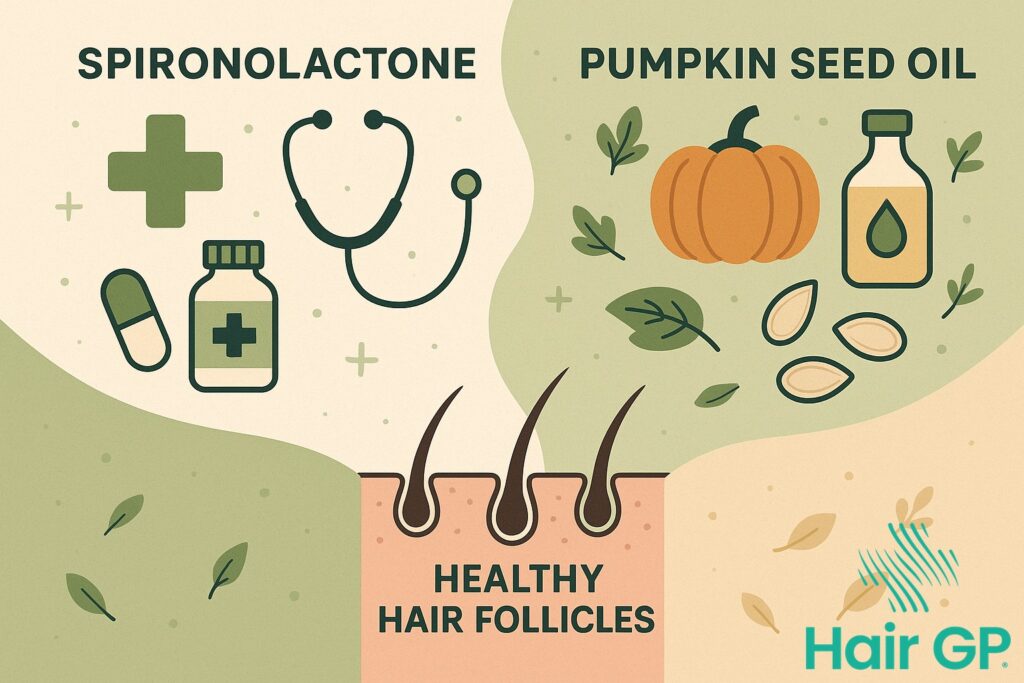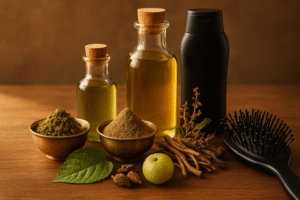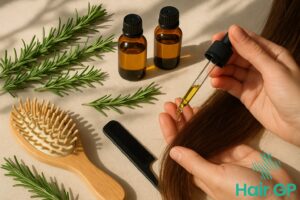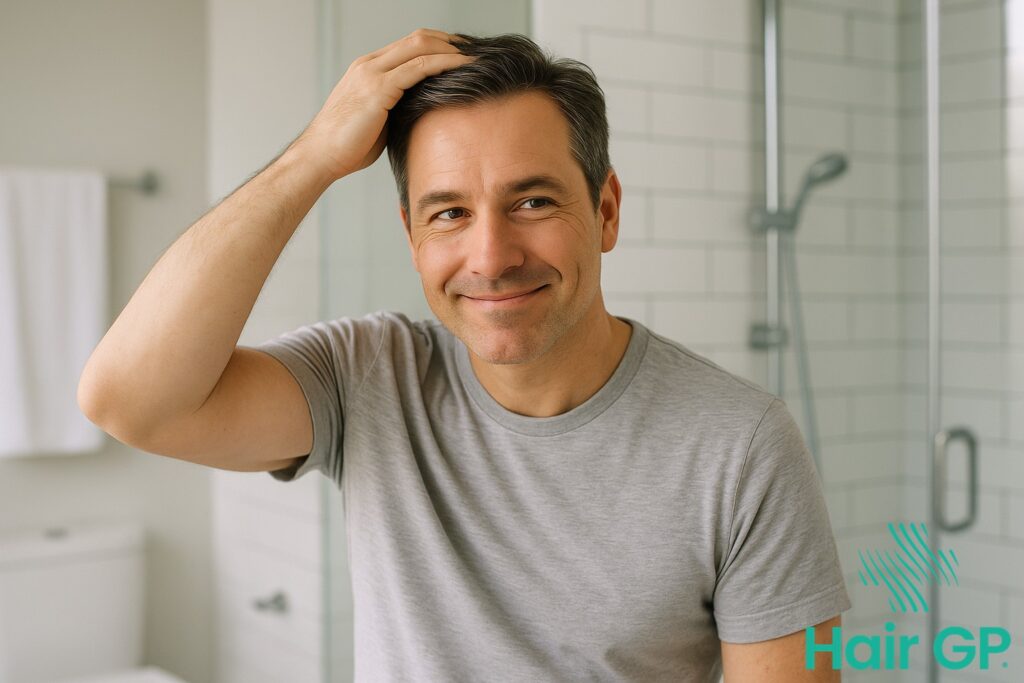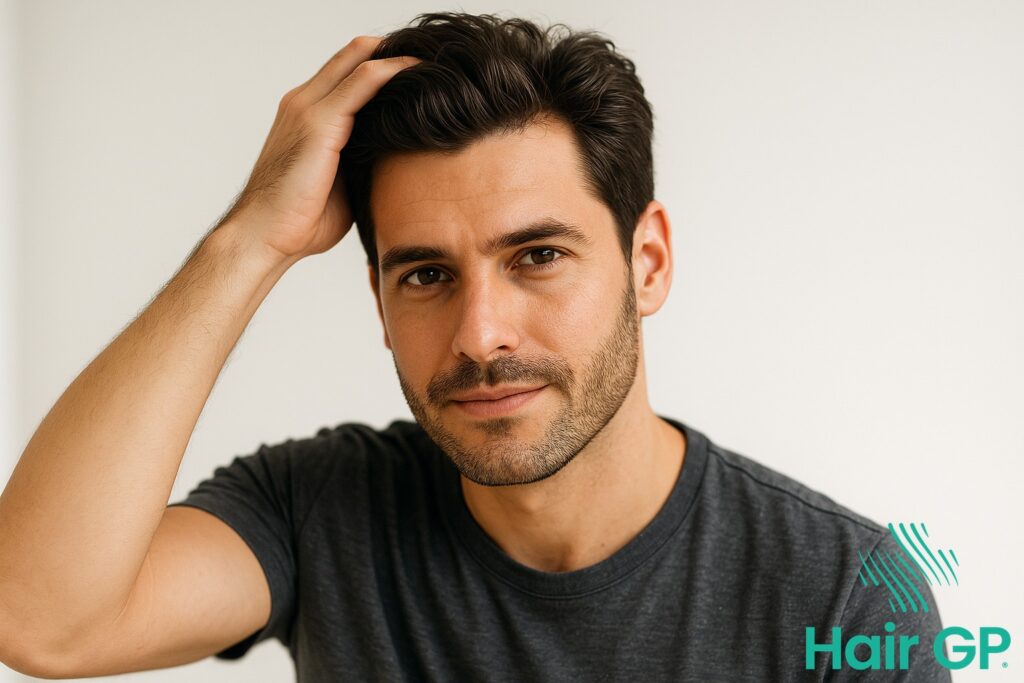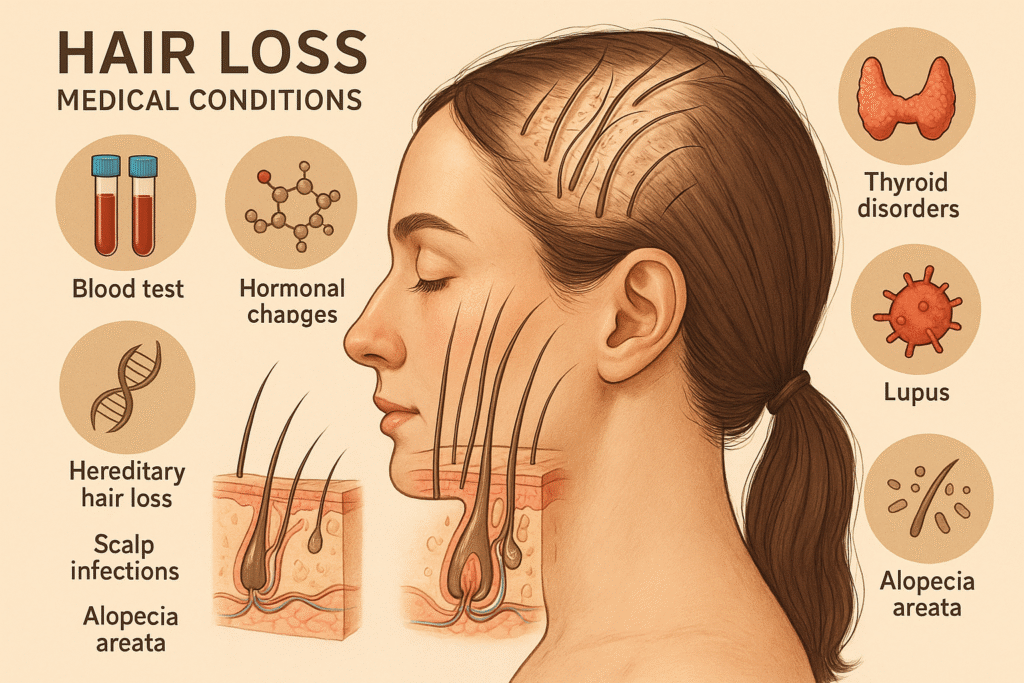Introduction
Hormonal hair loss affects millions of people worldwide, prompting many to explore both medical and natural remedies to restore their hair health. Among the most frequently discussed hair loss treatments is spironolactone, a prescription medication originally developed for blood pressure management that has shown remarkable success in treating female pattern hair loss. Meanwhile, pumpkin seed oil has emerged as a popular natural alternative, garnering attention for its potential to block DHT and promote hair growth without prescription requirements.
As more individuals seek comprehensive approaches to hair care, a common question arises: Can you take pumpkin seed oil with spironolactone safely? This concern reflects the growing trend of combining conventional medicine with natural supplements to maximise treatment effectiveness. Understanding the safety profile, potential interactions, and benefits of using these treatments together is crucial for anyone considering this dual approach.
This article explores the mechanisms behind both treatments, examines their compatibility, and addresses the critical safety considerations when combining them. We’ll also discuss potential synergistic benefits, common side effects to monitor, and alternative natural options for those seeking additional support in their hair restoration journey.
Key Takeaways – TL/DR
- Pumpkin seed oil and spironolactone can generally be taken together safely under medical supervision
- Both treatments work to block DHT and reduce androgens, potentially enhancing hair growth benefits
- Monitor for increased side effects like potassium levels and hormonal changes when combining treatments
- Consult your healthcare provider before adding pumpkin seed oil to your spironolactone regimen
Understanding Spironolactone for Hair Loss Treatment
Spironolactone, commonly known by its brand name Aldactone, has emerged as an effective prescription treatment for female pattern hair loss through its unique ability to combat hormonal imbalances. This medication works by blocking androgens at the cellular level, thereby reducing the impact of dihydrotestosterone (DHT) on hair follicles and promoting healthier hair growth cycles.
How Spironolactone Works for Hair Growth
Spironolactone functions as a potent anti-androgen medication by directly blocking androgen receptors in hair follicles, preventing hormones like testosterone from binding and triggering hair loss [1]. This mechanism is particularly beneficial for women experiencing hair loss related to polycystic ovary syndrome (PCOS) and other hormonal imbalances. By inhibiting the conversion of testosterone to dihydrotestosterone, spironolactone helps preserve existing hair whilst encouraging new growth. Clinical studies have demonstrated that doses ranging from 100-200mg daily can significantly improve hair density in women with androgenetic alopecia, with approximately 44% of patients showing marked improvement after 12 months of treatment [2]. The medication is frequently prescribed alongside other treatments for comprehensive management of hormonal hair loss conditions.
Common Uses Beyond Hair Loss
Originally developed as a diuretic, spironolactone serves multiple medical purposes beyond treating hair loss. Its primary indication remains the management of fluid retention in conditions such as heart failure and liver cirrhosis. Additionally, dermatologists commonly prescribe spironolactone for hormonal acne, particularly in adult women, due to its anti-androgenic properties. The medication has proven especially valuable in treating polycystic ovary syndrome, where it addresses multiple symptoms including hirsutism, acne, and scalp hair thinning simultaneously.
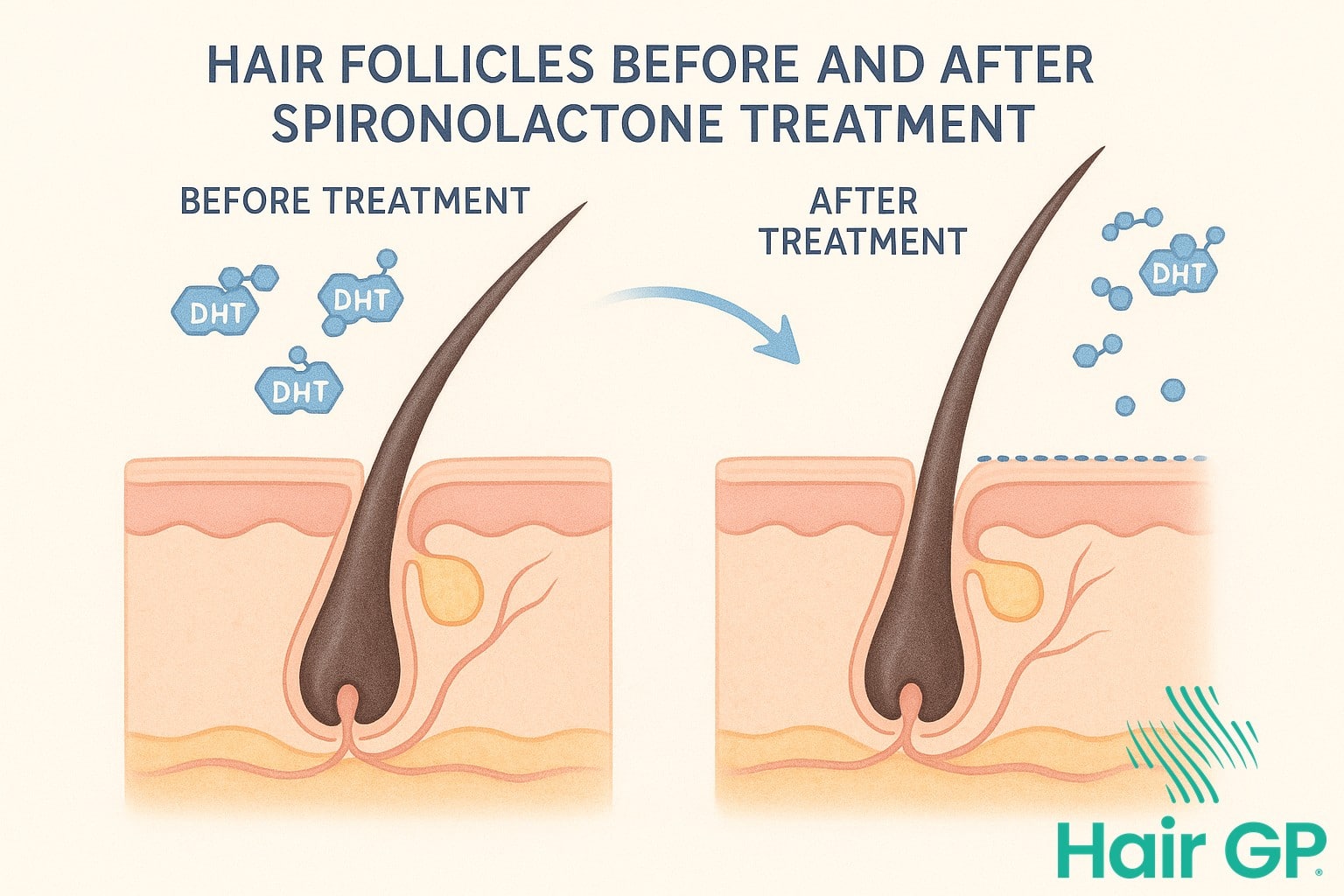
Pumpkin Seed Oil: Natural DHT Blocker for Hair Growth
Pumpkin seed oil has gained recognition as a promising natural alternative for those seeking to block DHT and stimulate hair growth without prescription medications. This plant-based remedy offers a gentler approach to addressing hormonal hair loss, with emerging research supporting its effectiveness in promoting hair growth through its unique nutrient profile and DHT-blocking properties.
Active Compounds in Pumpkin Seed Oil
Pumpkin seed oil contains several bioactive compounds that contribute to hair health. Its high zinc content plays a crucial role in protein synthesis and cellular repair, essential for healthy hair follicles [3]. The oil is particularly rich in phytosterols, including beta-sitosterol, which may help block DHT production by inhibiting 5-alpha reductase enzyme activity. Additionally, essential fatty acids like linoleic and oleic acid nourish the scalp and support optimal hair growth conditions.
Research on Hair Loss Benefits
Clinical evidence supports pumpkin seed oil’s effectiveness for hair loss treatment. A randomised, placebo-controlled trial demonstrated that men taking 400mg of pumpkin seed oil daily experienced a 40% increase in hair count after 24 weeks, compared to just 10% in the placebo group [3]. Participants also reported improvements in hair thickness and overall satisfaction. Whilst these results are promising, pumpkin seed oil shows more modest effects compared to prescription treatments, making it suitable as part of a comprehensive approach using natural remedies for mild to moderate hair loss.

Safety of Combining Pumpkin Seed Oil with Spironolactone
The safety of combining pumpkin seed oil with spironolactone for hair loss management requires careful consideration of potential interactions and monitoring requirements. Whilst both treatments work through different mechanisms, understanding their combined effects on the body is essential for safe and effective treatment.
Potential Interactions to Consider
When taking spironolactone alongside supplements like pumpkin seed oil, several interaction points warrant attention. The primary concern involves potassium levels, as spironolactone is a potassium-sparing diuretic that can increase serum potassium concentrations [4]. Although pumpkin seed oil contains minimal potassium compared to prescription medications, monitoring remains crucial.
Hormonal effects represent another consideration. Spironolactone blocks androgen receptors, whilst pumpkin seed oil may influence 5-alpha reductase activity. These complementary mechanisms could potentially enhance anti-androgenic effects, beneficial for treating hormonal imbalances but requiring careful oversight. Blood pressure considerations are also important, as spironolactone can lower blood pressure, and combining it with supplements may amplify this effect.
Monitoring Requirements
Regular blood tests are essential when combining these treatments, particularly for monitoring potassium levels and kidney function. Healthcare providers typically recommend baseline testing before initiating treatment, followed by periodic checks as per your Doctors recommendations [5]. Patients should track potential side effects including dizziness, fatigue, or irregular heartbeat.
Symptom tracking helps identify any adverse reactions early. Keeping a diary of energy levels, menstrual changes (in women), and hair growth progress assists healthcare providers in making necessary dosage adjustments. If potassium levels rise above normal ranges, dietary modifications or treatment adjustments may be required.
Dosage adjustments might be necessary based on individual response and laboratory results. Starting with lower doses of both treatments and gradually increasing allows for better tolerance assessment. Healthcare providers may recommend spacing supplement intake several hours apart from prescription medications to minimise potential interactions.
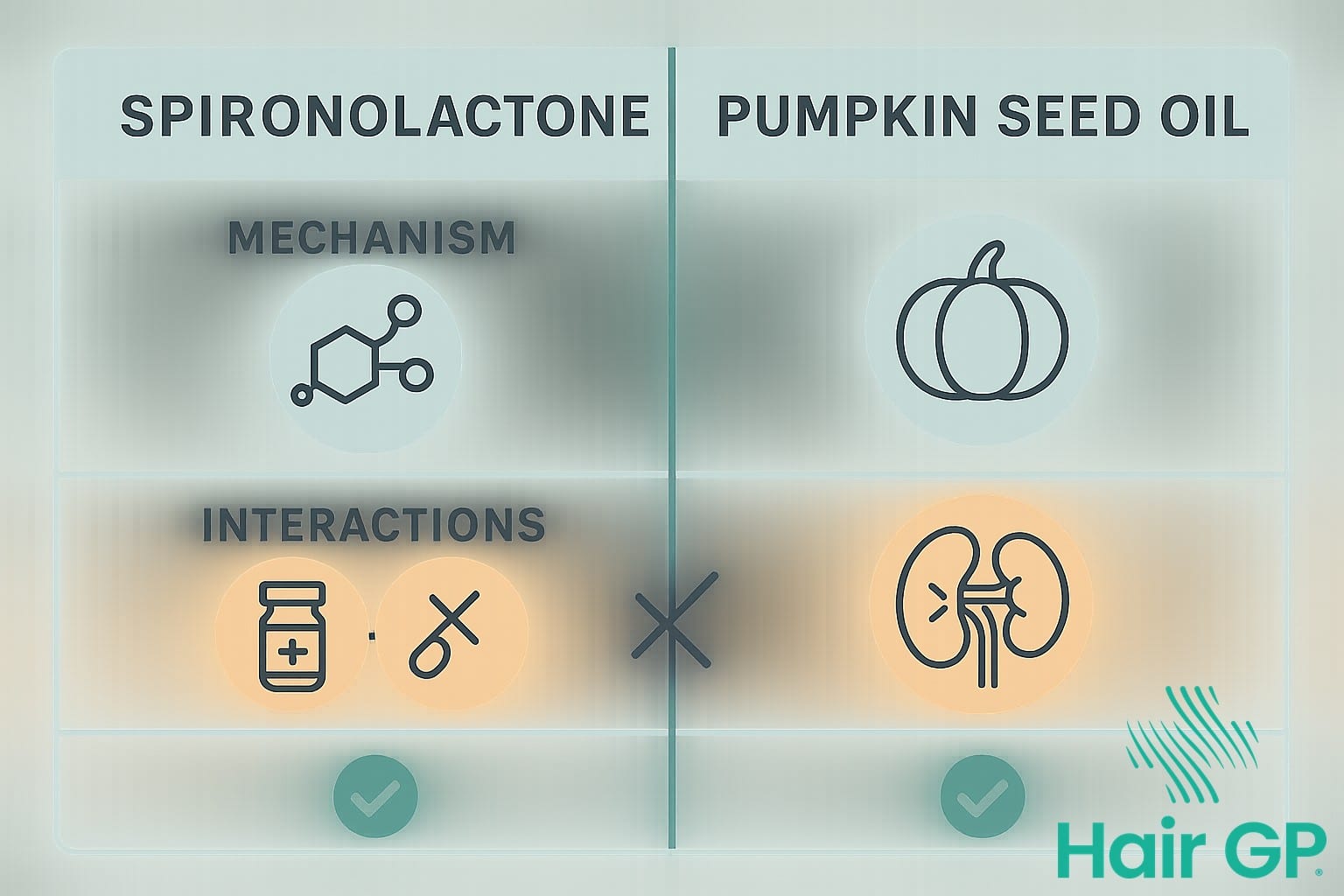
Potential Benefits of Combined Treatment Approach
The combination of pumpkin seed oil and spironolactone presents a compelling therapeutic approach for those who experience hair loss, particularly in cases of androgenetic alopecia. By utilising two distinct mechanisms of action, this dual treatment strategy addresses multiple pathways involved in hormonal hair loss simultaneously. Spironolactone works systemically to block androgen receptors throughout the body, whilst pumpkin seed oil provides targeted inhibition of the enzyme that converts testosterone to its more potent form, dihydrotestosterone (DHT), directly at the scalp level.
This complementary approach proves especially beneficial for female hair loss, where hormonal imbalances often involve complex interactions between various androgens. Women experiencing thinning hair may find that combining these treatments enhances overall hair thickness more effectively than either treatment alone. The localised action of pumpkin seed oil helps protect follicles from DHT damage, whilst spironolactone’s systemic effects address broader hormonal irregularities that contribute to hair loss patterns.
Furthermore, the combination may offer advantages in terms of side effect management. By using pumpkin seed oil as a natural supplement alongside a potentially lower dose of spironolactone, patients might achieve therapeutic benefits whilst minimising systemic side effects. The dual approach targets both circulating hormones and local scalp conditions, potentially leading to improved hair density and reduced shedding. This synergistic effect addresses the multifactorial nature of hormonal hair loss, providing a more comprehensive treatment strategy than monotherapy approaches.
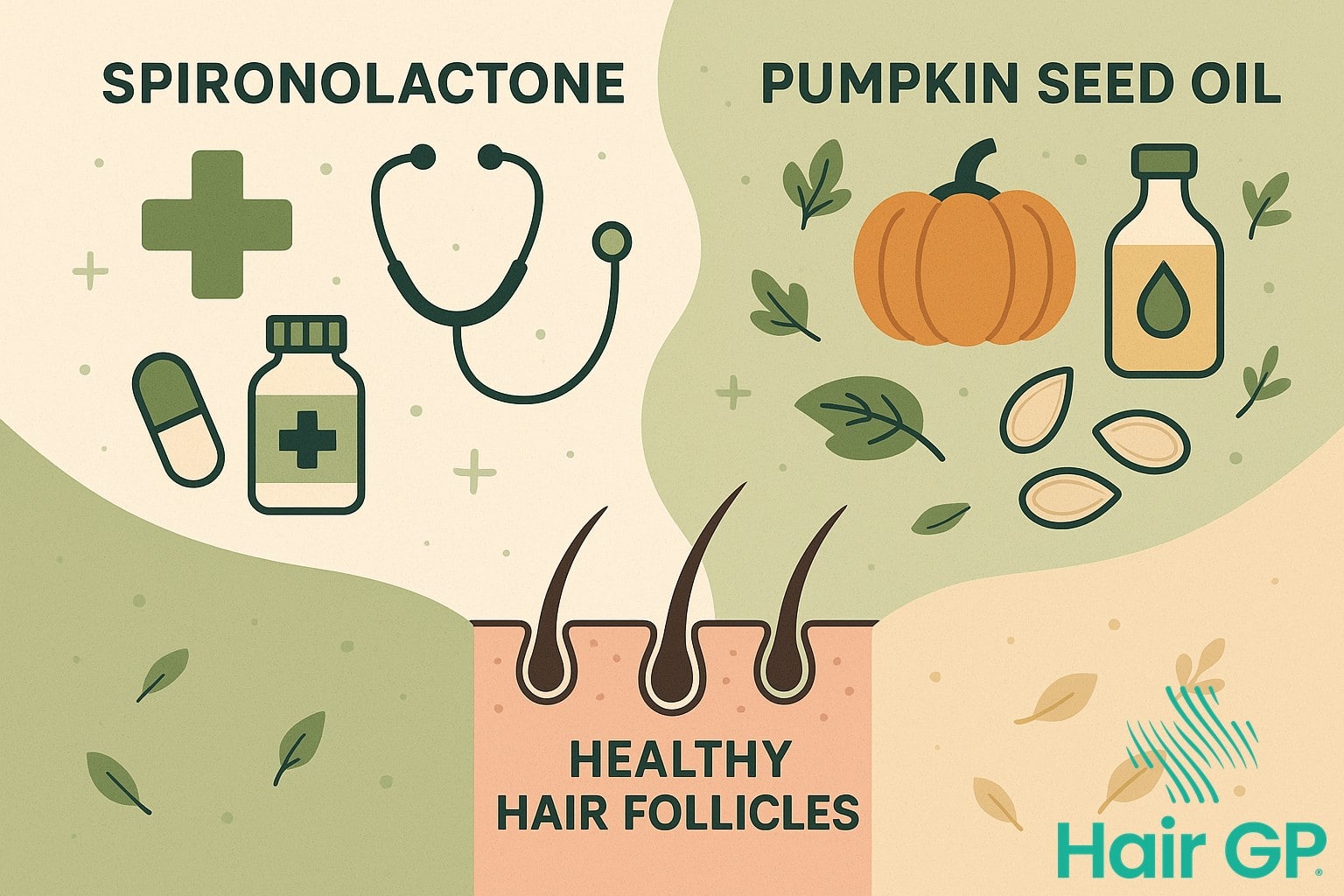
Side Effects and Precautions When Using Both Treatments
Understanding potential side effects and necessary precautions is crucial when combining natural supplements with hormonal treatments for hair loss. Both spironolactone and pumpkin seed oil generally have good safety profiles, but awareness of possible reactions helps ensure optimal treatment outcomes whilst minimising risks.
Spironolactone Side Effects to Monitor
Whilst spironolactone works effectively for hormonal hair loss, common side effects occur in approximately 20-30% of patients [2]. The most frequent issues include menstrual irregularities, particularly irregular bleeding or spotting between periods, affecting up to 22% of women taking therapeutic doses. Breast tenderness and enlargement can develop within the first few months of treatment, though this typically stabilises over time.
More serious concerns involve potassium elevation, as spironolactone functions as a potassium-sparing diuretic. Regular blood tests are essential, particularly during the first three months, to monitor electrolyte levels [6]. Additional side effects may include dizziness, fatigue, and paradoxical fluid retention in some patients. Gastrointestinal symptoms like nausea or stomach upset affect approximately 10% of users.
When to Stop Treatment
Immediate discontinuation becomes necessary if severe symptoms develop. Stop taking spironolactone immediately if experiencing chest pain, severe shortness of breath, or signs of hyperkalemia including muscle weakness, irregular heartbeat, or tingling sensations. Allergic reactions, though rare, require urgent medical attention if facial swelling, difficulty breathing, or severe rash occurs.
Pregnancy considerations are paramount – spironolactone must be discontinued immediately if pregnancy is suspected or planned, as it can cause foetal abnormalities [7]. Women of childbearing age should use reliable contraception throughout treatment. Additionally, persistent severe side effects lasting beyond three months warrant reassessment of the treatment plan with your healthcare provider.
Alternative Natural Remedies for Hair Loss
Whilst pumpkin seed oil shows promise for hair growth, several other natural remedies offer similar benefits. Saw palmetto, extracted from palm berries, works through comparable mechanisms by blocking DHT production. Studies suggest it may be particularly effective when combined with other natural treatments for enhanced results.
Rosemary oil has gained attention for its circulation-boosting properties. When massaged into the scalp, it stimulates blood flow to hair follicles, potentially matching the effectiveness of conventional treatments. Vitamin D plays a crucial role in hair follicle cycling, with deficiency linked to various hair loss conditions. Many individuals benefit from vitamin supplementation alongside topical treatments.
Other hair loss treatments worth considering include, iron supplements, and omega-3 fatty acids. Whilst minoxidil remains a popular pharmaceutical option, natural alternatives appeal to those seeking gentler approaches. The choice between natural remedies and conventional treatments often depends on individual preferences, severity of hair loss, and response to different interventions. Combining multiple approaches under professional guidance may yield optimal results.
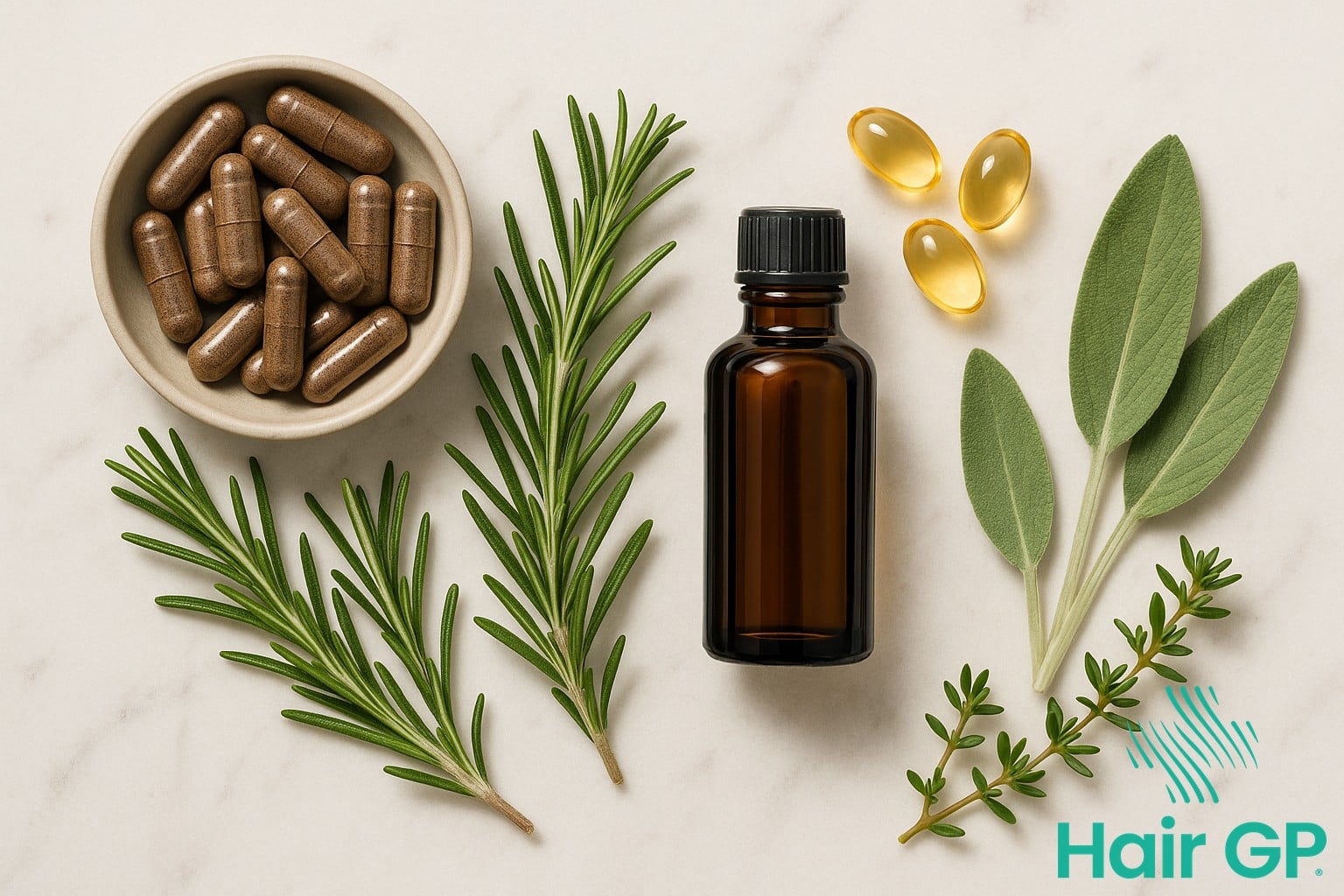
Conclusion
When considering whether Can You Take Pumpkin Seed Oil With Spironolactone, the paramount importance of medical consultation cannot be overstated. Whilst both treatments offer promising approaches to hormonal hair loss, combining them requires professional guidance from a Doctor to ensure safety and effectiveness. A comprehensive strategy incorporating multiple hair loss treatments may provide enhanced benefits for those experiencing thinning hair, particularly when addressing underlying hormonal imbalances affecting the scalp.
Healthcare providers can assess individual circumstances, monitor potential interactions, and recommend appropriate dosing schedules. They may also suggest complementary treatments like Regaine (Minxodil) to create a tailored hair restoration programme. Remember that successful management of hair loss often requires patience and a multifaceted approach. By working closely with medical professionals, individuals can safely explore combination therapies whilst minimising risks and maximising the potential for hair regrowth and improved scalp health.
Frequently Asked Questions
Generally, pumpkin seed oil can be taken with spironolactone for PCOS, but you should consult your healthcare provider first. Both treatments can affect hormone levels, so monitoring is important to ensure the combination is safe and effective for your specific condition.
It’s recommended to wait at least 4-6 weeks after starting spironolactone to establish a baseline and identify any side effects before adding pumpkin seed oil. This allows you to distinguish between effects from each treatment and adjust accordingly.
While spironolactone can increase potassium levels, pumpkin seed oil is not known to significantly affect potassium. However, regular blood tests to monitor potassium levels are still important when taking spironolactone, regardless of additional supplements.
Spironolactone is typically not prescribed for male pattern hair loss due to its anti-androgenic effects. Men may consider pumpkin seed oil alone or consult about alternatives like finasteride (Propecia) combined with natural supplements.
References
- Sinclair R, Patel M, Dawson TL Jr, et al. Hair loss in women: medical and cosmetic approaches to increase scalp hair fullness. Br J Dermatol. 2011;165 Suppl 3:12-8.
- Gupta AK, Quinlan EM, Venkataraman M, Bamimore MA. Spironolactone for the treatment of female pattern hair loss. Dermatol Ther. 2020;33(1):e13222.
- Cho YH, Lee SY, Jeong DW, et al. Effect of pumpkin seed oil on hair growth in men with androgenetic alopecia: a randomized, double-blind, placebo-controlled trial. Evid Based Complement Alternat Med. 2014;2014:549721.
- Plovanich M, Weng QY, Mostaghimi A. Low usefulness of potassium monitoring among healthy young women taking spironolactone for acne. JAMA Dermatol. 2015;151(9):941-944.
- Milani M, Puviani M. Safety and efficacy evaluation of a topical supplement containing pumpkin seed oil, vitamin E and omega 3 for hair loss: a prospective study. J Cosmet Dermatol. 2020;19(5):1242-1248.
- Palmer BF, Clegg DJ. Hyperkalemia across the Continuum of Kidney Function. Clin J Am Soc Nephrol. 2020;15(12):1753-1763.
- Kim GK, Del Rosso JQ. Oral Spironolactone in Post-teenage Female Patients with Acne Vulgaris: Practical Considerations for the Clinician Based on Current Data and Clinical Experience. J Clin Aesthet Dermatol. 2012;5(3):37-50.

